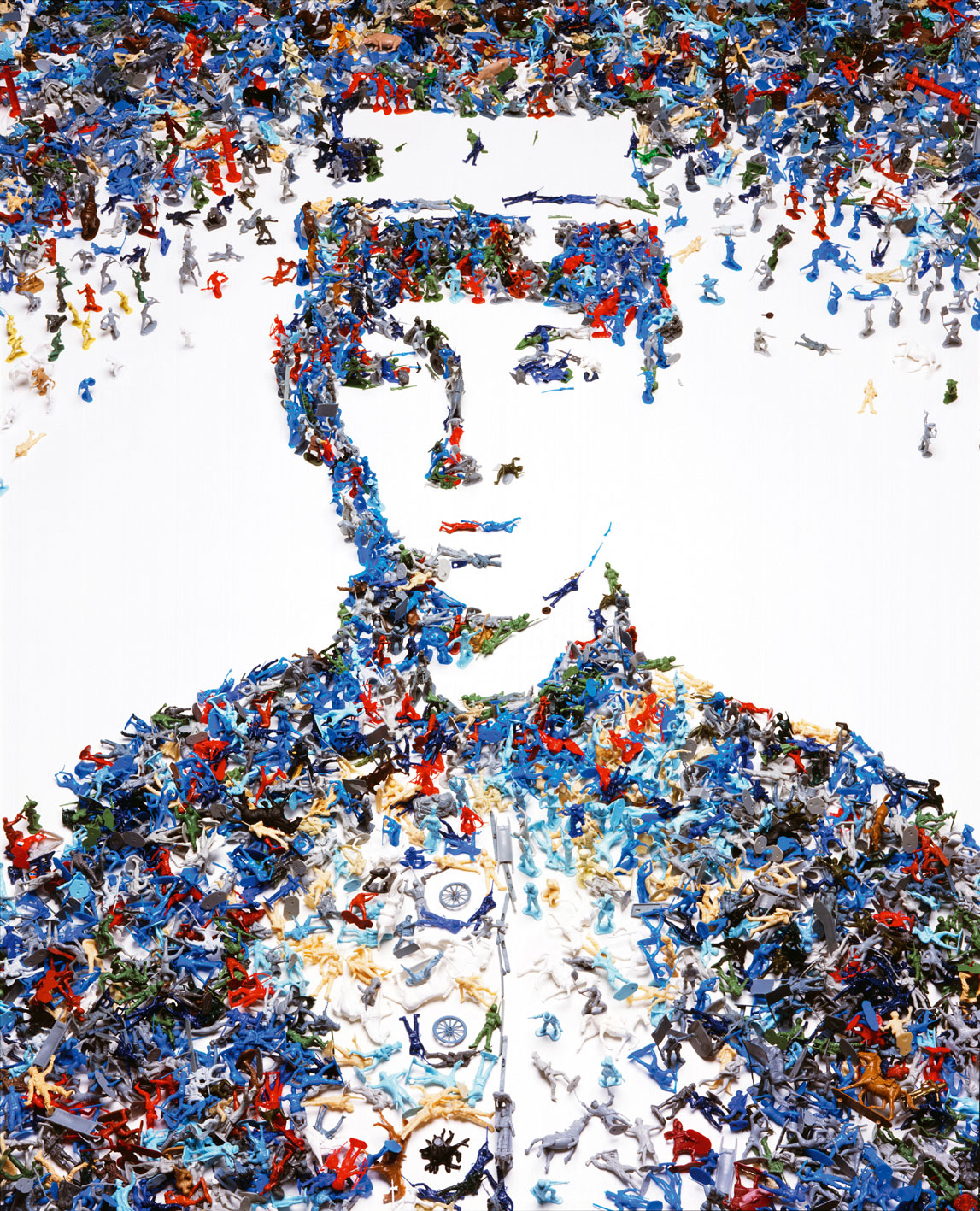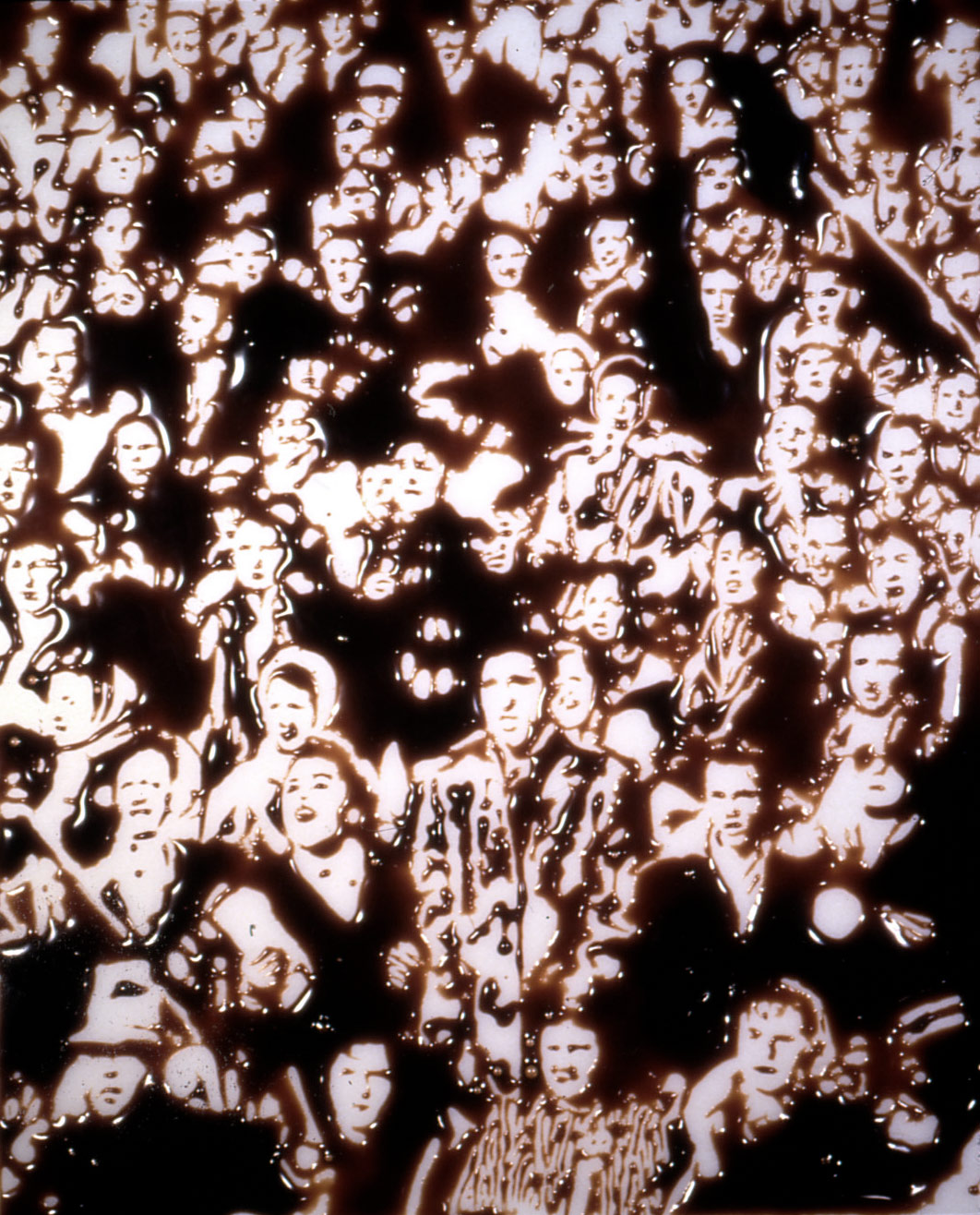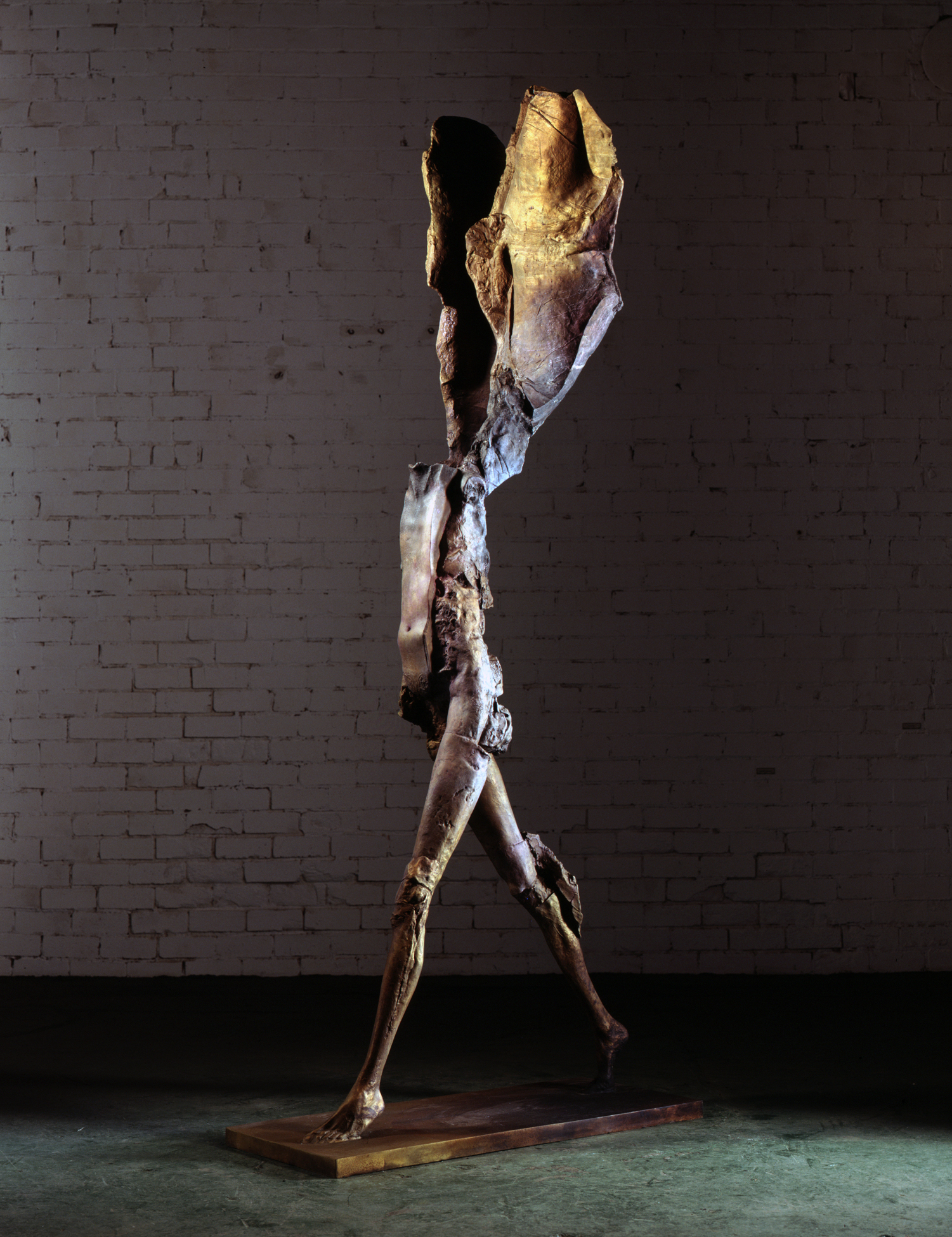Monday, May 13, 2013
Beth Wilson: Lucid Dreaming, Wherever You Go, There You Are
According to the way in which Barrett described how to effectively criticize art, Wilson's critique is exemplary. She gives us insight into the background of the artworks and artists that allows for deep insight into the pieces. She does not get wrapped up in describing the art in a complicated or confusing way. Using eye-catching phases such as "inventiveness" and "impenetrable tangle of wires" she both captures the readers attention and describes the pieces very accurately. Wilson also makes many cultural references, likening the pieces to famous movies and places. In that regard she is very engaging to the reader. The rich imagery she uses in physically describing the art makes it very easy to picture it visually. The way that Wilson is able to engage with the reader is definitely her strong point. In reading the article, I felt more like I was talking to a friend who was telling me about an exhibition they saw, rather than reading a dry, academic-style critique.
Saturday, May 11, 2013
Barrett Chapter 3
In
Chapter 3: Describing Art, Barrett tells us how to effectively criticize
art. The three most important aspects to
look at for effective art criticism are subject matter, medium and form. It is also necessary to provide background
information. This can be information
about the artist, artwork, or the time period and culture in which it was
created. Putting a piece into historical
text can give viewers a sense of how and why it was created. The medium which an artist chooses can give
us great insight into an artwork, and this aspect is often overlooked. Form is equally important, as it gives
information about how the artist chooses to present their artwork. It is also important to note not only what
the artist includes, but what they exclude as well. The best critics are able to engage their
readers with their writing style and descriptions. By writing with passion and importance, they
can make a huge difference in the interest their readers take in the art and
how engaged they become. A critic could
be describing the most beautiful work of art ever created, but if they have a
dry writing style it will likely get little attention.
Thursday, March 21, 2013
Artist Response 7: Vik Muniz continued
"The Castle At Bentheim, After Jacob Van Roysdael"
"Individuals"
"Marinara Medusa"
Muniz focuses primarily on medium in the above pieces. "The Castle at Bentheim" is made of sixty thousand feet of sewing string, "Individuals" is made of chocolate syrup, and "Marinara Medusa" of actual spaghetti. These real-life mediums are a symbol to everyday life, as the materials are all household items. In his review of Muniz' work in Masters of Deception, Al Seckel details how Muniz attempts to create visually provocative artwork through use of a wide range of mediums. He uses the fact that humans tend to draw quick conclusions about what they see to his advantage, often using images that already exist, but changing them in a way that changes the way people think about them. According to Muniz, changing the way people think is one of the primary goals of his artwork, but he claims to go about it a little differently than Seckel says. He uses the layers and non-traditional materials to make it more difficult for the viewer to understand the piece. This way, they engage the piece in a more in depth level, and are led to analyse it deeper than they would other artwork. The thousands of feet of sewing thread used in "The Castle at Bentheim" entirely alters the way the image is viewed. The thread makes the image seem as if it is all interconnected and flowing together. It is far more provocative and leads to a wider range of connections and conclusions by the viewer than a traditional photograph or painting would.
Thursday, March 14, 2013
Artist Response 6: Vik Muniz
 |
  |
Vik Muniz uses non-traditional materials in order to create astounding works of art. His choice of materials often reflects a double-meaning he instills in his work. His art often presents the viewer with a familiar image at first glance, however when they are looked at more closely, they are incredibly intricate images. The piece on top, titled "Toy Soldier," is a collage of a civil war soldier, formed by fallen toy soldiers. It is an incredibly thought provoking piece in many ways. Two major ideas I pulled from this piece are that war is treated as a game. Through pop culture, video games, movies, etc. war is seen as a game, as the real-life tragedies it causes fall by the wayside. Also, I felt that "Toy Soldier" described the way which people have become numb to the death tolls and casualties in war. Anyone who watches the news knows that there are daily killings and horrific tragedies caused by war across the world. Hearing about these events so frequently, however, it is easy to see them as simple statistical numbers (represented by the toy soldiers), and to forget the real humans that are devastated. The piece in the bottom right is titled "Le Songeur, After Corot." Like his other pieces, the material Muniz chose makes it spectacular, as it is made of forty-eight thousand feet of sewing thread. The above image doesn't really do the original justice, I found a much better copy in a library book. The detail that Muniz is able to achieve with so thin a material is incredible.
Wednesday, February 27, 2013
Artist Response 5: Doris Salcedo

Doris Salcedo's work send very powerful, stark messages. Of the above works, the one in the top left appeals to me the most. I had the opportunity to see this piece in the Boston ICA last year, and it strikes me as a very interesting, thought-provoking piece. It is composed of a wooden chair encased in concrete and held together by several steel bars. What appeals to me about it is its rigidity, the sharp lines as well as the very weathered surface of the concrete. I believe this piece is telling a story about education. The chair she used is very similar to those used in schools. The piece is showing how a strict education system can indoctrinate a child, and lead to a very closed-minded way of thinking. Upon entering school, a child has a very open and light mind, represented by an empty chair, that can adapt to and engage many new things. As time goes on however, the child's mind becomes weighed down with sets of rules, structures, and ways of thinking that are taught to them. The rigidity and weight of a material such as concrete demonstrates how someone's mind can become permanently locked into a way of thinking, unable to adapt to new situations and ideas. I think this piece is challenging not only strict styles of education, but the whole idea of learning in a classroom as well. It's a statement that learning about the world while sitting in a chair will not get you far, you have to go out and experience new things for yourself to develop and mature educationally.
Monday, February 25, 2013
SPA 3
Douglas Beube's above piece represents human activity in a number of ways. He is showing that when looking at people from a distance, many of us appear to have similar purposes, do activities in a similar way, and look similar as well. He is showing that humans need to get close and engage with one another. By doing that, humans feed the creativity and ideas of one another and can create much greater things than any individual could. I think that each book represents a person and they all contain separate information and ideas that together, strengthen them as a whole. Everyone has their own niche, and each one is equally important.
Sunday, February 24, 2013
Response to Chihuly video
The sociocultural factors I saw at play in Dale Chihuly's video were the techniques involved, the tradition, teamwork, group-roles, styles used, individual thoughts/ideas/tastes, gender roles and the organization of the shop. The materials/tools involved were the glass, rods, fire, gas, oven, freezer, shaping tools, marque (italian spotting technique), protective clothing, strength, and the actual knowledge of the malleability of the glass.
Wednesday, February 13, 2013
Artist Response 3: Douglas Beube
Douglas Beube, of the Center for Book Arts,
cuts and carves the pages of books to make them into entirely different creations.
He takes average looking books, and transforms them in a way that opens
many windows of interpretation. In the first picture below, he has cut
and crisscrossed the pages of a map book. He achieves a very interesting
contrast in this piece, as the pages seem to be both perfectly organized, as
well as tangled together at the same time. I think one of the themes he
was going for in this piece is his world view. By making this kind of
"organized mess" with the map, he has led me to interpret it as a
portrayal of the world as a place that is very interconnected and organized,
while at the same time very complicated.
The bottom picture is of a piece titled City. In my opinion, the
books are all shaped the same to represent the very similar looking buildings
found in cities. They are generally different in shape but other than that all
very similar. As they are books however,
each “building” contains entirely different writing on it. It is impossible to know what the book
contains unless you get up close to it and read. Though cities, buildings, and even people tend
to look similar, there is really no way of knowing what they contain unless you
get up close, engage them and investigate.
I found this piece to be the artist’s take on “don’t read a book by its
cover.” Beube’s work doesn't just please
the eye, but it makes one look at situations differently, and engages the
viewer. The simplicity with which he
does it in the above pieces is quite amazing.
Many of his other pieces are much more in depth in terms of how he
created them, but they have that same engaging affect.
Sunday, February 10, 2013
Reading Response: Chapter 1
Chapter one in the Social Production of Art deals with creativity, and how social structures have a profound impact upon it. Whether artists are aware of it or not, there is a manufacturing process going on in their head when they create a work of art. This process is shaped by social, cultural, historical and economic influences whether the artist tries to isolate themselves or not.
Wolff argued that creativity is not a special gift that artists have, but that people use creativity in nearly all professions. Before factory jobs and the onset of capitalism, humans were individually creative in all their fields of work. Stone masons, blacksmiths and tailors for example all worked creatively, however capitalism has replaced that individual creativity with profit driven demand for perfection and uniformity. The reason artists are seen today as having this "gift" is because they work in one of the few areas that relies almost entirely on individual creativity. Wolff also claims, however, that artists are not entirely "free" from capitalist demand. They are influenced considerably by the expectations of their audience, the economy, etc. Although capitalism is increasing the demand for creative works of art, it is becoming increasingly marginalized as artists think more about how much money a work of art will make, as opposed to what they want to express in it. Wolff sort of went back and forth on her position to capitalism and it's affects on art during this chapter. Is it the necessity to make art that will sell what clouds the artist creativity? If so, is no one truly "free" to act creatively or is there a distinct difference in the productive between someone who is an artist as a career and someone who makes art as a hobby?
Sunday, February 3, 2013
Artist Response 2: Stephen de Staebler
The ceramic work of Stephen de Staebler is truly astounding. Much of his work shows the relationship between humans and the environment. He is able to transform the clay in a way that makes it look much older than it is in many of his pieces. He works a lot with the human form, however he approaches it in a unique way. In much of his work he sculpts the human body with some or all of it represented as a geological type of formation. This is what really caught my eye about de Staebler's work. It shows humans and nature as one connected thing, worn down together through time. In the works below, it seems as if the human forms are encased in the stone, and are struggling to break free. Many of them are extending upwards as well, as if trying to shed the weight of something to reach upwards. In the piece below on the bottom, I believe the person trapped within the stone represents humanity, which is trying to break free from the natural constraints put on it by mother nature. All of his pieces, however convey a different sense of constraint put on humanity by nature. Some of his pieces evoke a feeling of determination and hope. Those are the figures that rise valiantly despite the constraint of stone. Other pieces by de Staebler, however, give more of a sad and sympathetic feeling, as if the human forms are permanently disfigured by nature in their struggle.
Monday, January 28, 2013
Artist Response 1: William Morris
William Morris’ glass pieces are quite astounding. Glass art has always been interesting to me,
but Morris takes the art to another level.
His attention to detail and incredible use of color really bring the
pieces to life. He seems to bring his
personal interest of nature into his work, and it results in a very harmonious
flow through much of his work. His
sculptures of animals were particularly astounding to me, in that he is able to
work the glass in such detail when it’s hot and molten. His work spans many genres of art as
well. Many other glass blowers have a
particular style or genre that defines them, but Morris’ pieces are all so
completely different from one another, many of them don’t even seem to be made
from glass at all. Some of his pieces
look as if they could be from the stone age, and others from hundreds of years
in the future. His interest in
archaeology can be clearly seen in much of his work where he gives tribute to
past cultures. It seems like there is a
wider theme throughout his work of the relationship of humans and their
environment, and how they affect each other.
He also has done a lot of work with human and animal skulls, which ties
in with a theme of life and death in nature.
His work can definitely be looked at from many different angles and
interpreted many different ways.
Thursday, January 24, 2013
Subscribe to:
Comments (Atom)














